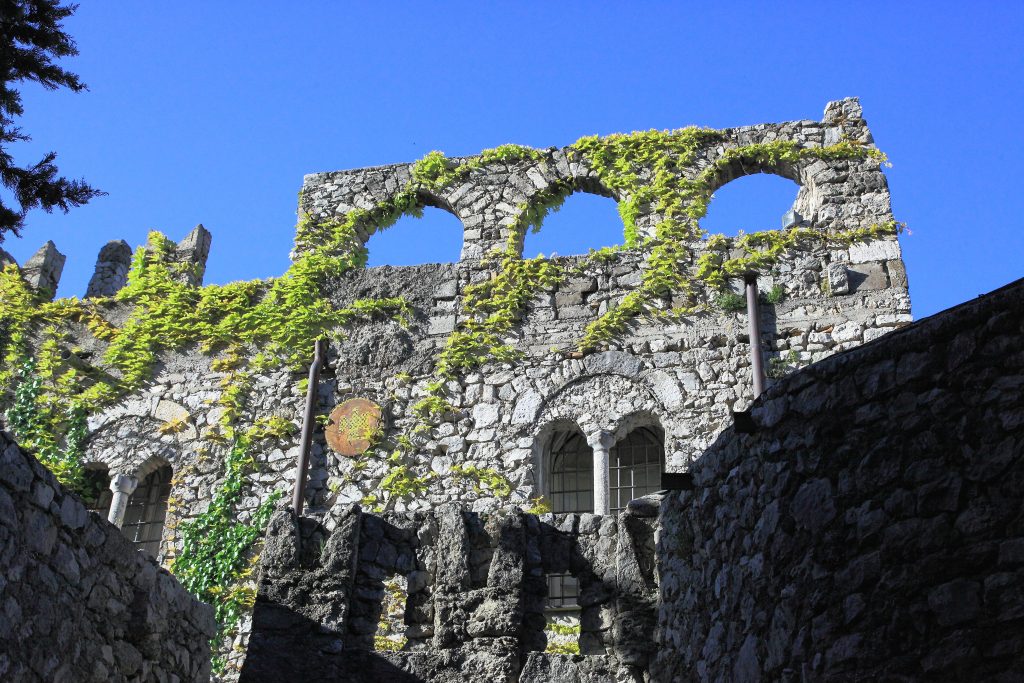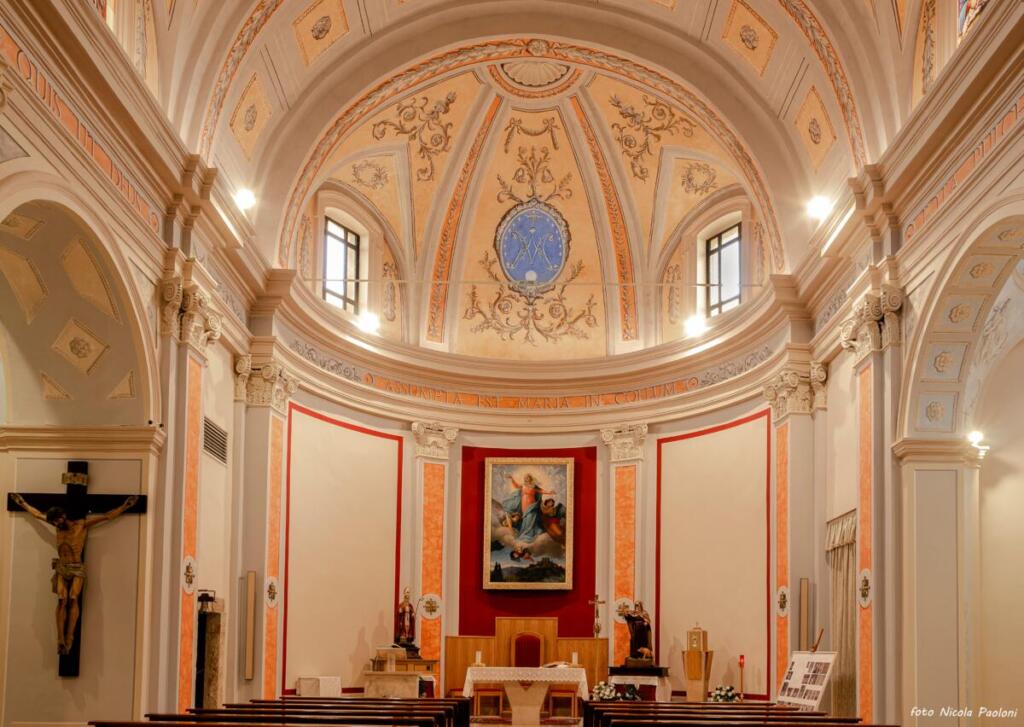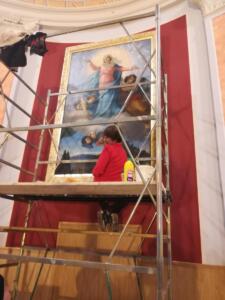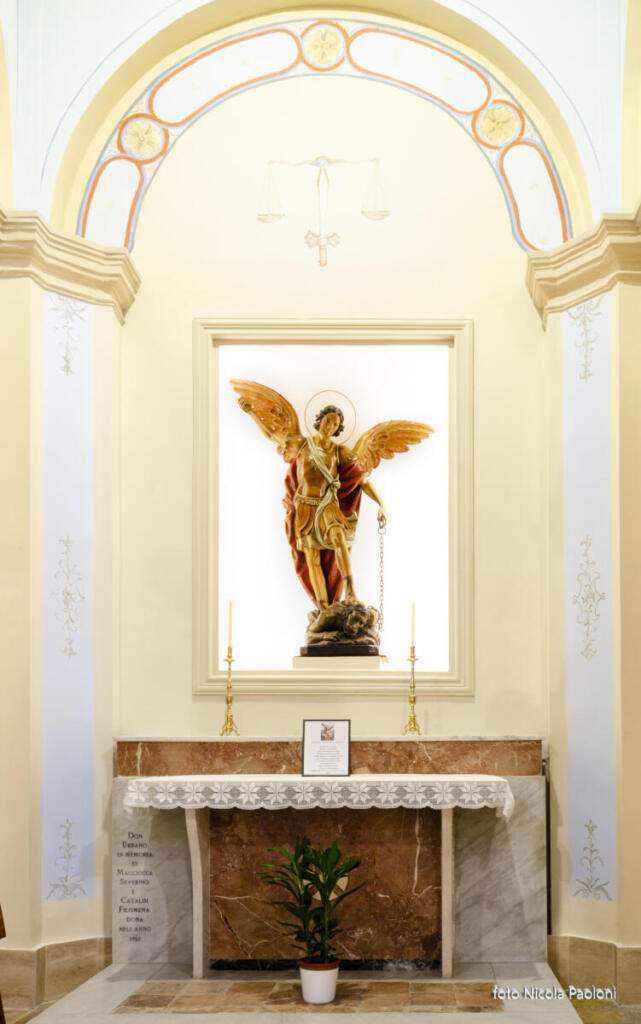“The town of Torre Cajetani sits on the top of a hill and has grown all around the medieval castle (XIII century) with its powerful quadrilateral structure [...] Its places of worship are interesting, among which we remember the parish church of Santa Maria Assunta."
Many tour guides who speak of Torre Cajetani describe our town in this way. We speak first of the castle and then of the church and, in reality, observing our town from below your eyes follow exactly the same "itinerary".
[caption id="attachment_47329" align="center-block" width="750"] Torre Cajetani - Castle by Giampiero Pacifico[/caption]
Torre Cajetani - Castle by Giampiero Pacifico[/caption]
The first document that speaks of the town, and specifically of the castle, is from 1180. Then, more than 100 years later, the church of Santa Maria is mentioned, it was 1295 (act of passage of Torre ai Caetani).
We have further news on it in 1300, with a list of the payment of tithes. Then we have Don Luca, who in 1328 took care of Santa Maria (with the clerics Giacomo di Andrea, Giovanni Secca and Giacomo Adiuti) and paid the first installment (solutio) of ten soldi.
In 1331 Santa Maria was linked to the church of Sant’Angelo (link) (that of the cemetery) and Giovanni de Sacco was the abbot and took care of it until 1333.
After these "facts" related to her, the written memory of the church is lost until 1600, when on the documents of the council of Torre and the Caetani Archive we are informed that the restoration that gave it its present forms was underway.
In fact, before then it had medieval form. And perhaps today's church still rests on the old walls.
Still, we have other news from the documents (Caetani Archive) of a further restoration in the early 1800s and a new consecration in 1853.
Also from the documents of the lords of Torre, we know that the presentation of the parish priest was of lay law "ius patronato" (a privilege) of the families that were heirs of the Caetani della Torre. The last parish priest presented in lay law was Don Fulgenzio Vinci in 1899.
In addition to these historical and institutional aspects there is also the spiritual aspect to speak of.
[caption id="attachment_116742" align="center-block" width="750"]
 Torre Cajetani - Inside of the church by Nicola Paoloni [/caption]
Torre Cajetani - Inside of the church by Nicola Paoloni [/caption]
The link between the Church and her people has always been very strong.
There is certain information on how the clerics of the town have become spokespersons for the discontent and miseries of our citizens, who over the years suffered serious famines but also harassment by the Caetani lords who followed one another over the years.
In 1800, for example, there were several famines that plagued our town and it was the presbyter of that time, Don Pietro Ascani, who made himself a spokesman for the Holy See (together with many other Torrigiani citizens) writing directly to the Pope. “Anomalous for the time, to ask for his intervention in aid of the Torrigiani (or Torresi).
[caption id="attachment_116751" align="pull-left" width="225"] Torre Cajetani - Restoration work by Marco Ubodi[/caption]
Torre Cajetani - Restoration work by Marco Ubodi[/caption]
Don Pietro was also the spokesman for a complaint by the people of Torre against Muzio Caetani (lord of Torre) who was accused of claiming the payment of undue taxes and not in turn paying the taxes.
The Count defended himself by referring to the purchase testament dating back to 1295 of the Castle and all feudal property and rights. In his defence he also brought several citizens to attest what was stated in the testament.
After lengthy discussions in 1808 the community was relieved of some taxes in favour of the Baron as the document was never found and the testimonies were not taken into consideration.
In 1834, the vicar forane of Torre wrote to the then bishop to ask for more precise information or further details that could exonerate one of our fellow countrymen unjustly, perhaps, accused (unfortunately we do not know what he was accused of and if he was convicted).
In 1853, our parish also asked for help from the bishop of the diocese of Alatri for the support of a teacher who had to come to teach us but who had no means to do it.
This cord has never been cut through the centuries and years.
We have many similar examples in recent years too. There has always been a mutual give and take between the villagers and the church that is still present in our day.
[caption id="attachment_116745" align="center-block" width="641"] Torre Cajetani - Details of the church by Nicola Paoloni [/caption]
Torre Cajetani - Details of the church by Nicola Paoloni [/caption]
The latest "cleaning up" of the Church is an example. The Torrigiani, the people, came to the rescue and to the help of their own parish at that moment when it was needed, without asking for anything in return.
They have brought the building back to its former glory respecting its history, losing work days, family weekends. And all to safeguard the "home" of all Torrigiani, from the past, the present and even the future.
If the Castle has always been the proud guardian of our town and the surrounding valley, the Church has always been its most faithful lieutenant.
It has always watched over the town, the Castle and above all the Torrigiano people.







Follow us